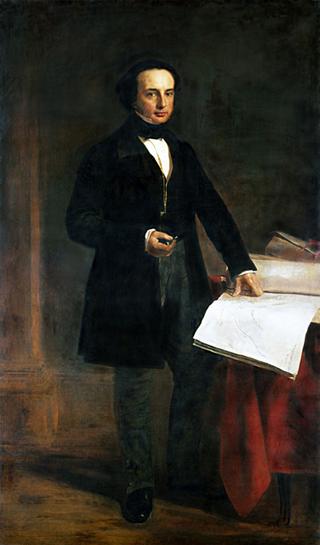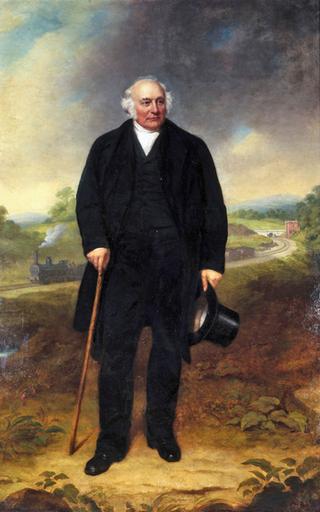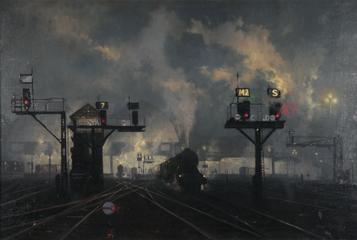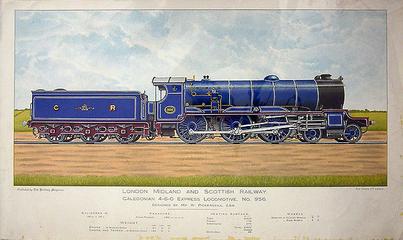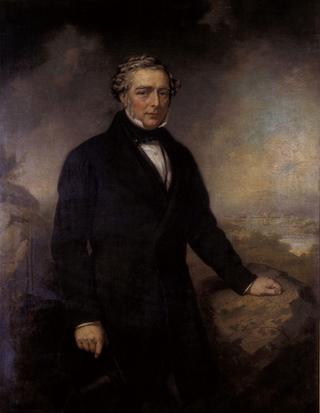
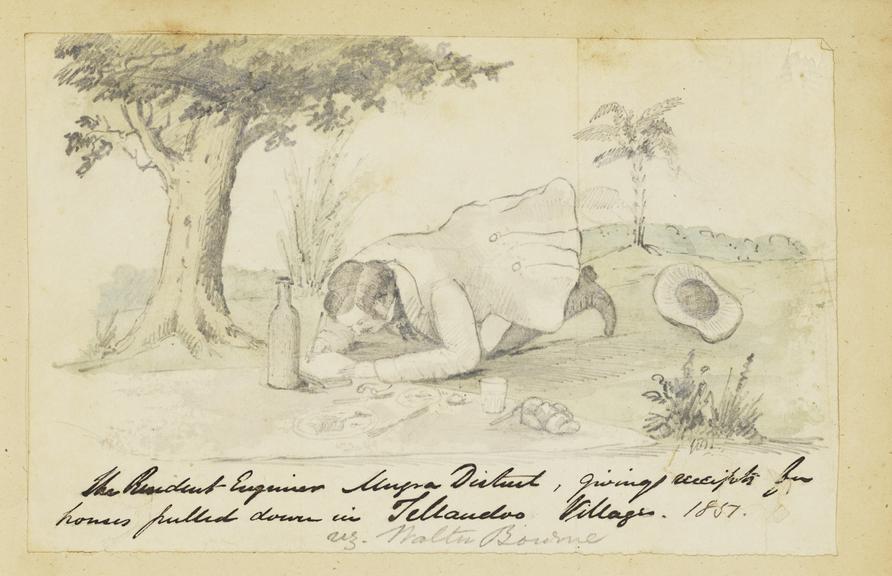
Drawing, pencil, ink and watercolour, The Resident Engineer Mugra District, giving receipts for houses pulled down in Tellandoo villages, 1857, viz Walter Bourne, by an unknown artist. Depicts an official of the East Indian Railway in the countryside bent over a picnic cloth laid with food and drink, writing in a book. His hat lies at his feet. There are trees in the background. Blue, green, and yellowy brown watercolour have been variously applied to the vegetation depicted. Inscription in ink and pencil below. The drawing is pasted on a slip of paper, possibly removed from an album. Written on the reverse in pencil is part of a word "..ahal". The drawing is from the collection of George Turnbull, Chief Engineer of the East Indian Railway. The inscriptions are in Turnbull’s hand.
This rather slapstick drawing depicts Walter Bourne. Bourne was one of three young men who travelled from London to India with George Turnbull, in Turnbull’s words ‘under some vague promise of employment from R. M. Stephenson’, the managing director of the East India Railway Company. It did not turn out to be vague after all: by 1856 Bourne was the Resident Engineer in Monghyr (now Munger). This 1857 drawing suggests that by the next year he had moved to Mugra, 880km to the north-west, towards New Delhi. By 1861 he had again moved and was working in Raneegunge (Rani Gunj) on the Burrakur extension to the line.
Turnbull was at first unhappy that as chief engineer he had not been able to influence the appointment of engineers serving under him, but he soon came to appreciate Bourne’s ‘valuable’ engineering work on the line.
Scottish engineer George Turnbull (1809-1889) oversaw the creation of one of the first railways in India, the East Indian Railway (EIR). The EIR ran from near Calcutta (now Kolkata), an East India Company trading post in the north-east that the Company established as the capital from 1773. The terminus was originally Benares (now Varanasi), but the line quickly extended to New Delhi in the north, which became the capital of India in 1911. Calcutta and New Delhi are over 1,300km miles from each other – further than the distance between Paris, France and Budapest, Hungary.
Turnbull collected artworks during his time in India, many of which were produced by EIR engineers. These watercolours and drawings provide a rare view of nineteenth-century India from the perspective of the British engineers designing and building the country’s first railways. The collection includes landscape scenes and portraits. While many of the landscapes show the construction of the railway, others focus entirely on India’s local architecture or its rural spaces. The portraits are of people Turnbull encountered while in India. While the portraits of British people are inscribed with their names, most of the Indian people depicted remain anonymous or identified only by their job.
The British introduced railways in India to satisfy the mounting economic and military needs of their colonial administration. They hoped that the new technology would foster an increased sense of collective identity by making it easier to travel quickly between distant regions. They also hoped the railways would socially ‘improve India’ by instilling a sense of punctuality among Indians, a quality British colonialists believed Indians lacked. The racist stereotypes underpinning these intentions, and the interconnected idea that technology could trigger social change, were common beliefs in nineteenth-century British society.
Details
- Category:
- Pictorial Collection (Railway)
- Object Number:
- 2017-7090
- Materials:
- graphite, paper (fibre product) and watercolour (paint)
